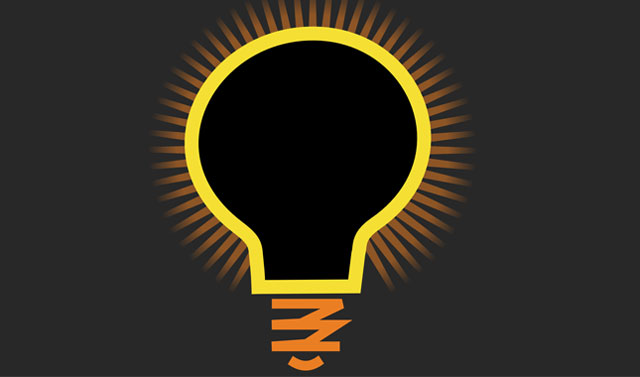
A financial black hole of growing proportions is engulfing Eskom as it dances between blackouts and load shedding.
The utility claims that maintenance issues are the principal reason for the current shortfall of electricity, but it is delays at the two power giants that is costing it, and the country, dearly.
Its failed bet that Kusile and Medupi, which are four years behind schedule, would already be on line means the utility is not earning revenue from the two giant nonstarters and has to fund the stratospheric capital and interest cost itself.
Eskom has acknowledged that the delays mean that 5GW — roughly the amount that each of the two plants will be able to produce when they are operational — is not online. This amounts to an estimated annual loss of R30bn from electricity sales.
Eskom is coy about the mounting interest bill on servicing the capital cost of the two power stations. Energy analyst Chris Yelland said the interest bill for Medupi was estimated at R29,2bn and for Kusile at R48,7bn, but these figures were given to him six months ago but at that stage were already outdated.
“The longer the delay, the higher the interest bill goes,” he said. “These need to be updated but Eskom appears very reluctant to provide these figures.”
There is also the cost of coal contracts that, in the case of Medupi, have already kicked in. Exxaro disclosed that this amounted to R1,6bn in 2013.
According to Eskom’s integrated report for the six months ending September 2014, debt securities and borrowings totalled R265bn, up from R182,5bn in March 2012.
Had the two new power stations come online in 2011 as was originally intended, many of Eskom’s woes would have been averted.
In a bid to keep the lights on in recent years, the utility neglected the maintenance of its power stations, and says it needs breathing room of about 5GW (an eighth of its current installed capacity of 40GW) to perform planned maintenance without the risk of load shedding.
Had the new build gone to plan and brought on the 4,8GW Eskom says would have been online today, this would not only have created the breathing room it needs, it would have generate R30bn/year, calculated at a current tariff of 70c/kWh, if one assumes the stations would run at 100%, according to experts.
The interest bill is a number much harder to extract from the black hole, thanks to Eskom’s reporting methods and apparent unwillingness to provide more detailed information.
When asked: “What is the total interest bill projected to be for both Kusile and Medupi?”, Eskom replied: “The cost of capital for the projects forms part of the estimated cost of the project.”
The costs of Medupi and Kusile were initially estimated at R69bn and R80bn respectively. But the latest (outdated) estimates have risen to R154bn for Medupi and R172bn for Kusile.
Three independent industry experts insisted that the interest costs were not included in the cost of completion of the two projects.
“Because the cost is not ring-fenced, it is difficult to get a grip on it,” said Yelland. “But added interest during construction can easily account for 25% of the construction cost. It’s a huge cost because Eskom is using borrowed money, not equity.”
“The only thing they [Eskom management] will talk about is overnight costs [this excludes interest],” said independent power consultant Doug Kuni. “They do not disaggregate it. Eskom does its financial accounting specifically in this way so they are not open to scrutiny… It’s easier to stir it all up and ask the regulator for more revenue.”
Power station debt
Asked how much debt the utility had incurred to fund the two megaprojects, Eskom could not provide a separate number from its aggregate debt of R265bn.
“Eskom follows a ‘pool’ approach to financing the utility’s requirements. This pool of funds are made up of cash generated by electricity sales, bonds issued to the markets, specific loans linked to trade finance, etcetera,” the utility said.
“All these sources of finance make up the overall cost of capital of Eskom. The Medupi and Kusile projects are allocated their fair share of this capital costs of the ‘pool’, while the project is still under construction.”
Debt servicing costs have grown too and, according to Eskom’s annual reports, interest paid more than doubled from R4,2bn in the 2008-2009 financial year to R9,9bn in 2012-2013.

Moreover, Medupi and Kusile are subject to contractor claims that result from a range of things such as variations or additional standing time for delivery trucks.
Last July, Eskom said it had received cumulative contractor claims at Medupi and Kusile worth R50bn, as reported by Engineering News. But the group executive for the capital division at that time, Dan Morokane, said global settlement rates were typically between 7% and 9% of the original value claimed because of duplications.
Eskom is also paying penalties to Exxaro because coal was supplied for Medupi, but the power station is unable to use it.
As reported by the Mail & Guardian in March last year, the coal supply agreement caters for the shortfall payment of R1,6bn in 2013 and R352m in 2012. Asked for further information about the costs associated with this agreement, Eskom said: “The content of the coal supply agreement cannot be made available due to the confidentiality of the commercial considerations.”
Eskom could not provide information on a coal supply agreement for Kusile and industry experts are unaware that one is in place.
Because of the power crisis, Eskom has to run open-cycle gas turbines, which guzzle diesel at a rapid rate for extended periods. The utility says it spends about R1bn each month on diesel.
Commenting on the treasury’s rescue package for the utility, which involves an access to further government guarantees and the sale of assets to provide Eskom with a cash injection, Kuni said the ministry of finance was taking quality, money-yielding assets and “throwing it into a big black hole that is Eskom… You don’t know how big the hole is, so why would you put money in it?” — (c) 2015 Mail & Guardian
- Visit the Mail & Guardian Online, the smart news source




